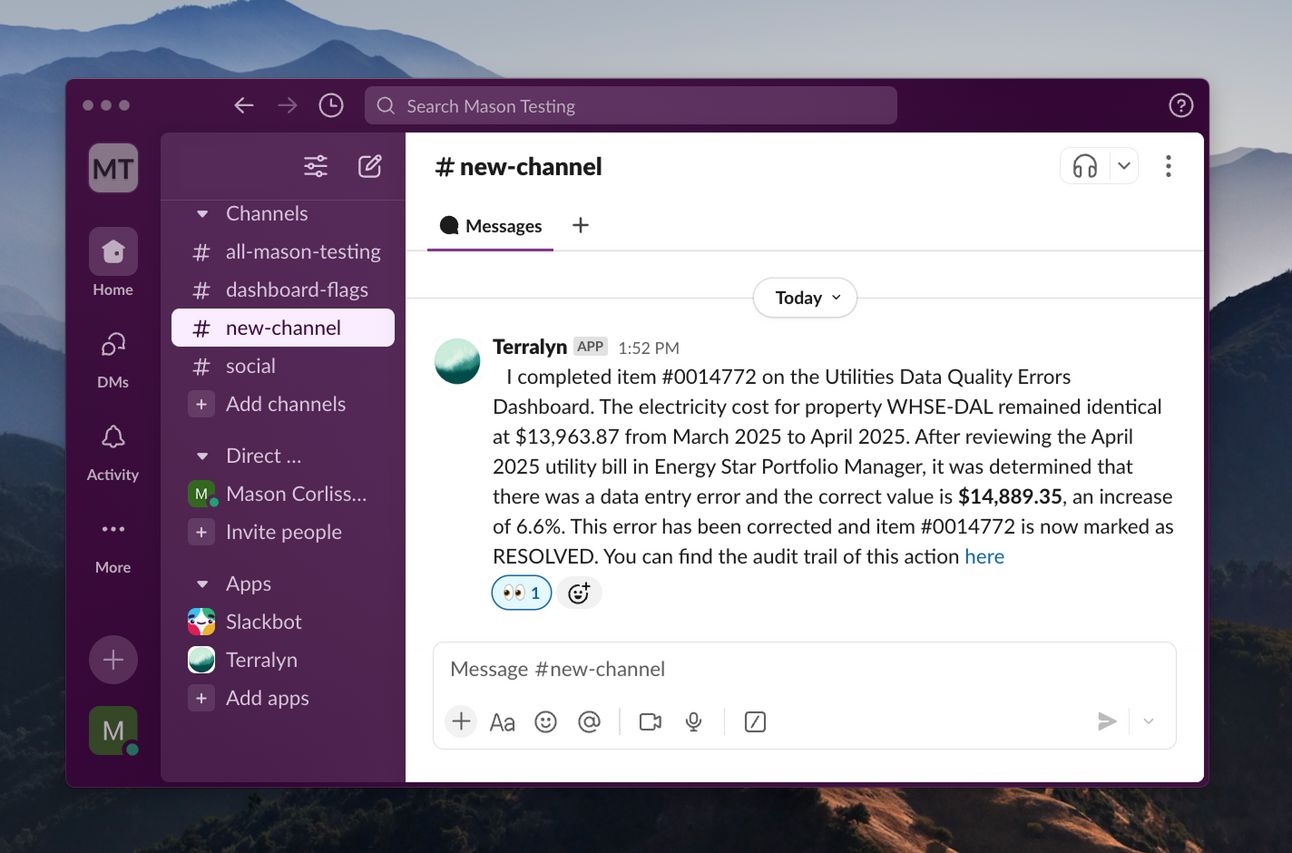- The Green Executive Briefing
- Posts
- The $9.2 Trillion Challenge: Understanding the Net-Zero Transition
The $9.2 Trillion Challenge: Understanding the Net-Zero Transition
➡️Understanding the Net-Zero Transition


This week’s reading time: 5 minutes
Welcome to another edition of The Green Executive Briefing. In under 10 minutes, you’ll be fully updated on the latest happenings in Sustainability and ESG every Tuesday at 8am EST. 🌎
We sift through a vast array of articles and data from trusted sources, distill the information, and present it to you in simple, bite-sized pieces every week. 🌍
Subscribe Today 🌍
Universal Challenge Across All Sectors:
Power generation (largest emitter)
Industry and manufacturing
Transportation and mobility
Buildings and construction
Agriculture
Forestry
Waste management
More Readings
🌟 Spotlight: Terralyn.ai, Sustainability Pros Create Impact, Not Reports

Sustainability professionals create impact, not reports.
If this is the case, then why are teams spending >50% of their time handling data and reporting demands to comply with every XYZ acronym framework?
Sustainability platforms can help streamline 80% of the work, but the 20% gap is widening.
Your day is probably shuffling between systems: Email ↔️ Data warehouses ↔️ Carbon accounting platform ↔️ Excel ↔️ Reporting platform
Excel… so much work to be done in Excel
This is where we come in: Terralyn is building the first AI sustainability analyst for corporate sustainability teams, automating end-to-end workflows for data collection, data quality, analytics, and reporting—completing tasks, like a teammate, in the background 24/7.
If you can write a workflow as a list of steps, Terralyn can automate it
Terralyn is opening a private beta program for sustainability professionals where our team of experts will integrate Terralyn’s agentic capabilities into your daily workflows. If you are interested in participating, we would love to hear from you!
Feel free to find some time on my calendar link: https://calendly.com/terralyn/meeting-with-mason-at-terralyn
Mason Corliss
Founder, Terralyn
Want to get featured in the spotlight? Reply to this email: [email protected]
Join over 4 million Americans who start their day with 1440 – your daily digest for unbiased, fact-centric news. From politics to sports, we cover it all by analyzing over 100 sources. Our concise, 5-minute read lands in your inbox each morning at no cost. Experience news without the noise; let 1440 help you make up your own mind. Sign up now and invite your friends and family to be part of the informed.
🌟 Spotlight: The Sustainable Storytelling Sprint by Solarpunk Studio
Your sustainability work deserves so much more than a checkbox—it deserves a narrative that builds trust, secures buy-in, and sparks real momentum.
The Sustainable Storytelling Sprint™ from Solarpunk Studio is a two-day immersive workshop and content creation experience designed for sustainability, ESG, and communications teams. Solarpunk Studio helps mid-sized to enterprise-level organizations translate their internal initiatives into audience-ready narratives—aligned with ESG frameworks and stakeholder priorities.
✔️Align your messaging with carbon, waste, and equity goals
✔️Train your team in visual and strategic storytelling
✔️Walk away with six months of premium, ready-to-use video and content assets
Whether you’re preparing for a report, campaign, or executive briefing, we’ll help you showcase progress with clarity and credibility.
Book a discovery call and mention the special discount for Green Executive Briefing subscribers: https://app.hellobonsai.com/s/solarpunk-studio/discovery
Want to get featured in the spotlight? Reply to this email: [email protected]
Intro
The journey to net-zero emissions isn't just an environmental imperative—it's the largest economic transformation in human history. According to new research from McKinsey Global Institute, achieving net-zero will require an unprecedented $9.2 trillion annually in capital spending over the next three decades.
To put this in perspective, that's nearly $275 trillion in total investment by 2050—roughly equivalent to building the entire U.S. economy from scratch three times over.
Main
1. A Universal Challenge Across All Sectors
The transition touches every corner of our economy. Carbon dioxide and methane emissions flow from seven critical systems:
Power generation (largest emitter)
Industry and manufacturing
Transportation and mobility
Buildings and construction
Agriculture
Forestry
Waste management
This universality means no sector can sit on the sidelines, everyone has a role to play.
Here's the challenging reality: most of the spending needs to happen in the next decade. The transition follows an aggressive timeline where:
Investment peaks between 2026-2030
8.8% of global GDP must be allocated annually during this period
Delayed action exponentially increases costs
This front-loading creates intense near-term pressure on capital markets and government budgets.
Main
The numbers are staggering:
$3.5 trillion increase in annual spending on physical assets
$1 trillion in stranded assets from high-emissions infrastructure
$2 trillion in continued investment in low-emissions assets
$2.7 trillion for ongoing operations of high-emissions assets during transition
Main
The transition's impact varies dramatically by geography and development level:
Developing countries face disproportionate costs relative to GDP
Fossil fuel-rich regions must navigate complex economic restructuring
Some industry sectors show 20% of GDP exposure in high-risk regions
Countries like India and Brazil face particularly acute challenges balancing development needs with climate goals.
Main
The transition amplifies several risk categories:
Rising energy prices during the shift
Supply chain disruptions as technologies scale
Asset impairment for high-emissions infrastructure
Transition risks affecting entire industries
These risks require sophisticated financial planning and risk management strategies.
Main
Despite the challenges, the transition creates substantial opportunities worth $2.1 trillion in annual global assets:
Three key opportunity areas:
Decarbonizing processes and production methods
Replacing high-emissions products with clean alternatives
New market offerings including decarbonization services, supply chain innovations, and infrastructure support
WRAPPING UP
🔮 CLOSING THOUGHT: What This Means for Business Leaders
The window for gradual change is closing. Organizations need to:
Assess their sector exposure and transition timeline
Develop capital allocation strategies for the critical 2026-2030 period
Identify opportunity areas within their value chain
Build partnerships to navigate the complexity and scale required
The net-zero transition represents both the greatest challenge and opportunity of our time. Success requires unprecedented coordination between governments, businesses, and financial markets. Those who act decisively in this decade will shape the economy of tomorrow.
The question isn't whether this transition will happen—it's whether your organization will lead, follow, or be left behind.
P.S. When you’re ready, here’s how I can help you:
Download our Dashboard GHG Accounting Scope 1, 2 & 3. Customize it with your organization's numbers to build a compelling business case.
Refer 2 other sustainability leader (see “Click to Share” button below)
Book a Consultation: Click HERE
GHG Accounting Strategies (Scope 1, 2 & 3)
ISO 14001 Compliance (Environmental Management)
Did you like today's email?Let me know what you thought so I can make the next email even better. |
CREDITS


